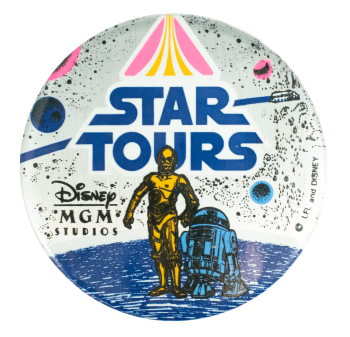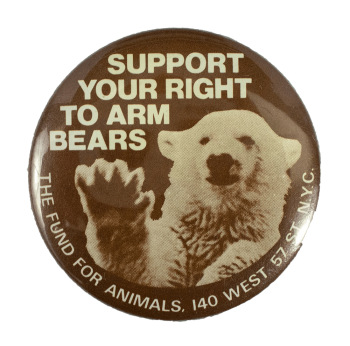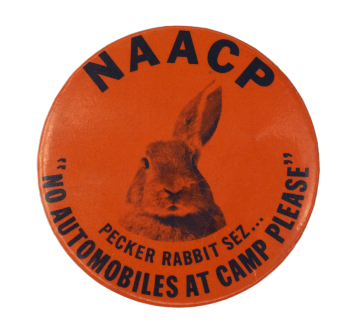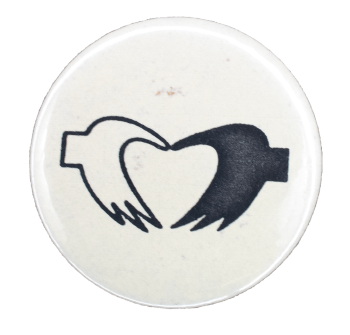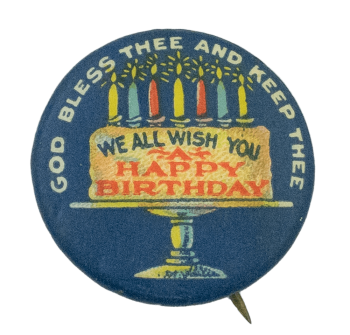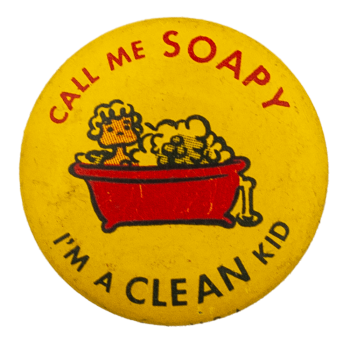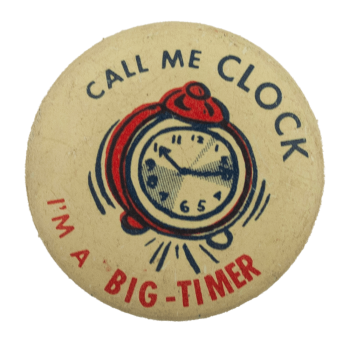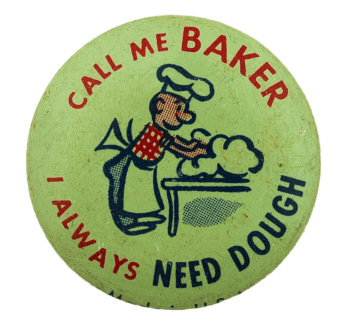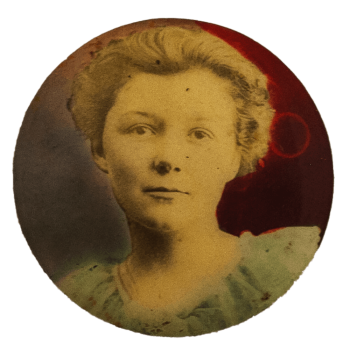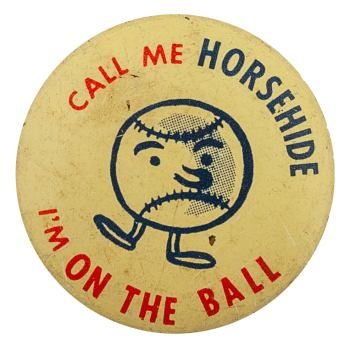Star Tours
| Category | |
|---|---|
| Additional Images | |
| Sub Categories | |
| Text on Button | Star Tours Disney MGM Studios |
| Image Description | A tall golden robot and a small blue robot in front of an abstract white space background with blue and pink planets with blue and black text. |
| Back Style | |
| The Shape | |
| The Size | |
| Additional Information | Star Tours is a theme park ride at DIsney MGM Studios based on the Star Wars films. The ride originally opened in 1989, but was given considerable renovation in 2011 following Disney's purchase of Lucasfilm and the Star Wars franchise. Another renovation was done in 2024 to add content from Disney's various Star Wars television shows. |
| Sources |
Star Tours. (n.d.). D23. https://d23.com/a-to-z/star-tours/ Star Tours Sets Course for New Adventures in 2024. (2023, April 9). Disney Parks Blog. https://disneyparksblog.com/disney-experiences/star-tours-sets-course-for-new-adventures-in-2024/
|
| Catalog ID | EN0679 |

